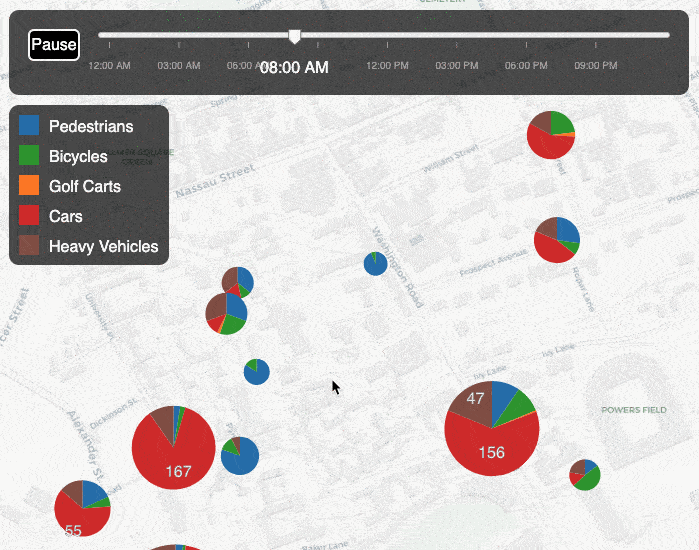Discovery
At the founding of the University in the middle of the 18th century, walkers shared roads, not necessarily easily, with horses and horse-drawn wagons. The railroad brought more people on foot.
Since then, bikes, cars, buses, golf carts, bike-sharing, Uber and Lyft, and e-scooters have all reshaped how people get around. These recent innovations exist in a continuum of change that the University has been managing since its earliest days.
New technologies have never eliminated our desires to get close to one another to share ideas and work together. New technologies will also not eliminate the fundamental geometric problem of fitting large numbers of people into and through shared spaces.
In preparation for the growth of the campus, now is the right time to reimagine mobility at Princeton University.
What is the state of mobility on campus?
The Current State Report is an analysis of mobility at Princeton University today. It is the first element of what will become a new Princeton Mobility Framework. When complete, the Framework will help the University develop the policies, services and infrastructure needed for people to move around the growing campus in the next five years and beyond.

Visualizing how people move on the campus
Pedestrians, bikers, buses, trucks, vans, golf carts - Princeton's people get around campus in all different ways. We wanted to know how this plays out in different areas of campus at different times. So we counted pedestrian, bicycle, and vehicle traffic at some key campus spots over the span of an entire week day in October 2019.
Click here or on the animated thumbnail to explore traffic on campus using our interactive tool.
Helping the Princeton community reimagine campus mobility
The Mobility Framework will redesign the TigerTransit network to create TigerTransit 2.0 and improve the biking and walking experience on campus. A large group of students, staff, and faculty have given their time and expertise as part of the Transportation Advisory Council. We kicked off the project in September of 2019 with a workshop to learn the basics of designing a transit network and explore ideas that can make walking and biking 'irresistible.'

Elm Drive traffic on a Wednesday afternoon
Princeton University’s historic campus may have been built for walking and horse carts, but today a lot of the maintenance, construction, business, and catering happen thanks to motor vehicles. At present, these needs seem to be met in an uncoordinated way, with each individual driver developing their own plan for how their vehicle should relate to the walking, cycling, scooting and socializing happening on campus roads and paths. See this short video for a snapshot of utility vehicles on lower Elm Drive.
